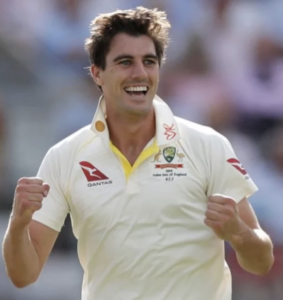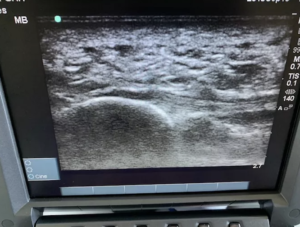
by Sam Davies
Pat Cummins debuted for Australia in 2011 after being the youngest player to ever receive a Cricket Australia contract. After being named Man of the Match in his first Test match, he broke down with injury and spent an extended time away from the game. He has since been part of a winning World Cup team, reclaimed the Ashes in England and is currently the ICC Cricketer of the Year. Our podiatrist, Sam Davies, was fortunate to sit down and chat with Pat today to discuss sport and injury management.
Sam: Thanks for meeting with us today, Pat. I want start by asking you to cast your mind back through the better part of a decade to the 2010/2011 Big Bash. You were the leading wicket-taker of the tournament and you were only 17 years old at the time. What are your memories of that time?
Pat: Yeah so it was the last season of the old Big Bash before it became the Big Bash League. Those 6 months were crazy. I finished school, signed up for university, debuted in 1st Grade cricket and, in the space of a couple of months, I played for New South Wales Second XI and then into the New South Wales side, and then was handed a Cricket Australia contract. It was a pretty turbulent few months. My whole world was accelerated and turned upside down. Suddenly, I went from being a school student to a professional cricketer. I just remember loving it. Stuart Clark was our New South Wales captain and Simon Katich, guys that I obviously didn’t know personally but guys I grew up watching play Test cricket. Suddenly I’m lining up with Sarfraz (Stuart Clark) at mid-off and I’m asking him where I should bowl.
SD: So you were the youngest person ever to get a Cricket Australia contract, you then receive your baggy green and then debut against South Africa. Not just debut but you took 6-79 in the second innings and hit the winning runs to be named Man of the Match. What are your memories of this?
PC: I just remember thinking this is crazy. I’m getting a baggy green cap that I’ve got for life. No one can take that away from me. But also, looking around, I had Ricky Ponting and his baggy cap that was about 150 tests old by then. There was Mike Hussey, Michael Clarke, Mitchell Johnson – these stalwarts of the game who had achieved so much and suddenly I was playing on the same side as them. It was just crazy as an 18-year-old to be in that position. It was awesome.

Credit: Photo courtesy of Wisden Cricket

SD: It would have been incredible. Now the reason for today’s interview is that during your test debut I understand you went down with a heel injury. Is that correct?
PC: Yeah, it was on Day 1. I think we had bowled about 15 overs and I started getting a bit of a sore heel. Just felt like a bit of bruising really. Finished the day’s play and iced it up. Next day we didn’t have to bowl, fortunately, so I spent the day icing it and then went back to bowling the day after. With each spell of bowling, it just got worse and worse. It just felt like the worst bruise you could think of. When bowling, there’s about 10 times your body weight going through that front foot so if there’s any sort of ailment it gets magnified quite quickly.
SD: Being a young guy at the time, I imagine you thought it would blow over and get better quickly. When did you realise it wasn’t just a bruised heel?
PC: Well I never had one before, and they are quite uncommon. I was just totally focused on that game so I was trying to do everything I could to get through.
SD: What was the exact diagnosis?
PC: I had ruptured the fat pad under my heel. The fat pad was pretty well smashed to bits.
SD: So how long were you out of the game?
PC: I ended up being out of the game for about 7–8 months, and that was to get back to playing T20 cricket and one-day cricket, where my foot could cope with only bowling 10 overs in a day followed by a few days off. It was a really gradual build-up. The injury just hung around for ages. There was just nowhere to hide when bowling without smashing your heel to bits.
SD: Was it a case of ‘too much too soon’? I mean, you were only 18 years old and playing all 3 forms of the game.
PC: It is really common for blokes trying to bowl lots of overs to get some kind of injury. Whether that’s a back or shoulder injury, but in this case it was my foot. Probably what made it a longer injury than perhaps it should have been was the fact it was during a Test match, so you keep bowling on the sore spot to get through a game. But I don’t regret any of that. I was part of a great Test win and had my debut. I wouldn’t change anything.
SD: Absolutely. I guess the layman doesn’t understand how taxing fast bowling is: the physics and loads behind it. The loads must be tremendous, especially when you are doing it so often.
PC: Certainly. We bowl around 20 overs a day. That’s 120 balls. You have upwards of 10–12 times your body weight going through your front foot so that’s a ton of weight going through your knee, the ankle and the foot, 120 times. And over here in Australia we have pretty hard wickets so it’s basically like bowling on concrete. In some ways I am surprised these sorts of injuries don’t happen more often.
SD: With the fat pad, what did treatment consist of?
PC: We tried a few different things, especially to get the swelling down. We tried sessions in a hyperbaric chamber; we tried salts to draw out the moisture. The swelling just wouldn’t go away. It swelled up to twice the size of my other heel. We talked about going on crutches or into a moon boot, but our thought was that if we completely lost all load, we’d have to spend longer reintroducing that load at the end of rehab in order to build (strength) back up. I made sure I wore good shoes and limited walking as much as possible for the first few months and then after that we focused on protecting [the heel] with gel heel pads; just trying to slowly build up load and react to what my heel was telling me. Some days it would swell up with the smallest amount of load and then a couple of weeks later I might get through a light jog before it would swell up. It just took a long time.

Credit: Photo courtesy of Wisden Cricket
SD: Now I understand that the heel wasn’t the only concern you had at the time. Am I right in saying you also had stress fractures in your back? I guess they are almost the fast bowler’s curse?
PC: Yeah, they are. They are very common in young fast bowlers. We are all tall, trying to bowl fast, with really unnatural, big forces travelling through our bodies. I’d have to say my heel was probably the worst one though, just in terms of length of injury. For months I felt really injured. I couldn’t walk around. Even going out for dinner, I’d have to sit down the whole night. Just walking from the car to the restaurant would result in the heel swelling up for a few days. It was certainly the most annoying injury. With all the others, you know you are going to be fine and come back from them. They are pretty normal.
SD: Once you came back through New South Wales, were you feeling OK? Did you have the trust in the body?
PC: We are definitely lucky in cricket that we have 3 different formats. I certainly felt a long way from playing red ball cricket and being able to bowl heaps. But I had the trust to get through T20 cricket and one-dayer’s. I felt that, physically, my speed and rhythm came back quite quickly. Knowing how many balls your body can tolerate bowling took a lot longer. Each injury was frustrating but I knew I could get that trust back fairly quickly.
SD: Now I, like a lot of people, have been enjoying watching the new docuseries ‘The Test,’ which focuses on the World Cup and Ashes campaigns. I was surprised by the amount of tape the fast bowlers were using on their feet and ankles before every game and training session. It’s quite the process.
PC: Yeah, it is. We basically do that for every session. At the moment I don’t have any issues but in the past I’ve had things like impingement in the feet, which I’ve had to manage. I mean, somewhere like England, you have soft foot marks but here in Australia you have rock hard foot marks and on Day 4 and Day 5 they become big holes. Your ankles are landing at all sorts of angles. So I just try and protect all of that. The strapping is more preventative than a treatment. And once you start strapping, it’s hard to go back.
SD: I guess the fear of not strapping and then something happening would always be there. I imagine the taping provides peace of mind as well?
PC: Yeah, exactly. I guess batsmen are really particular about the bats they use, whereas we bowlers are so particular about our shoes. So we all have orthotics, certain socks we wear and are particular about the way we get our feet strapped and the way our spikes are arranged on our shoes. It’s really individualised. Everyone is slightly different but that part of our equipment is just so important because we know that if it’s slightly off you can get a long-term injury pretty easily.
Quick-fire Questions!!!!
SD: Pat, just before we finish today, I’ve just got some quick-fire off-topic questions, if that’s alright?
PC: Absolutely. Go for it!
SD: Favourite ground?
PC: I’d have to say Lords.
SD: Worst player to get out to at training?
PC: Matthew Wade. He thinks he’s a great bowler and you don’t stop hearing about it if he gets you out.
SD: Best ball you have ever bowled?
PC: Probably the ball to Joe Root at Manchester. 1st ball. As a right-arm quick, you always try to swing the ball past the outside edge and still hit the top of off-stump, so that was pretty satisfying.
SD: And lastly, if you hadn’t become a cricketer, what would you be doing?
PC: Well, I’ve got a business degree so something along those lines but still in sport. Otherwise I do like my D.I.Y., so maybe a builder. Who knows?
SD: Pat, this has been great. Thank you for taking the time to chat with us today. We really appreciate it.
PC: No worries at all. Easy done.

Credit: Photo courtesy of Wisden Cricket






